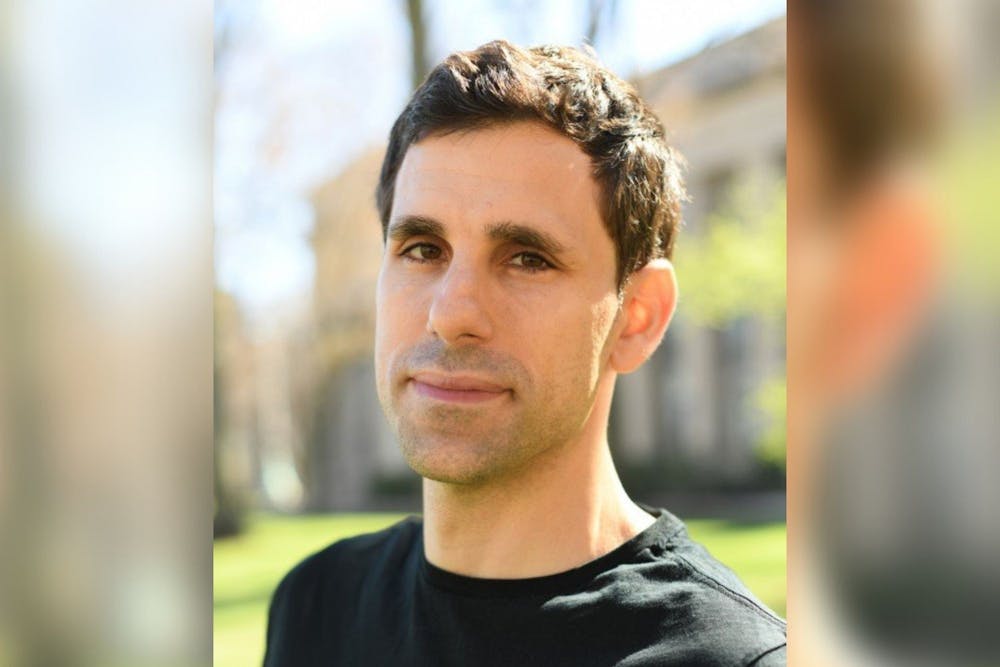
Principle Investigator of the De La Fuente Lab, César de la Fuente, Ph.D.
Perelman School of Medicine professor César de la Fuente's rapid, at-home COVID-19 test has been submitted for Food and Drug Administration approval.
If approved, the portable breath tests could be used to monitor COVID-19 positivity among people across the world. The test, called RAPID, was developed in the de la Fuente lab beginning in September to quickly and accurately detect the virus while remaining cheap enough to be widely accessible. The lab has been analyzing the data from their respective cohort study and will soon be submitting their work for publication.
“Our overarching goal is to create diagnostics that anybody can use — not only the people with economic means, but also people from low-resource communities or low-income or developing countries," de la Fuente said. "We want to have a long-term impact in that arena.”
If production can be streamlined, each of the sensors will end up costing less than 10 cents, postdoctoral fellow Marcelo Der Torossian Torres, who worked in the experimental side of the test's production, said.
“If it’s not that cheap, people won’t use them," he said.
In order to lower the cost of manufacturing, each test is made with cheap materials. The electrodes, conductors through which electricity travels, used in the test can also be inexpensively printed.
The test uses electrochemical sensors to detect the presence of the virus. The sensor will detect the spike proteins that give COVID-19 its characteristic shape and will send an electrical signal once the virus binds to a receptor.
Postdoctoral fellow Marcelo Cardoso Dos Reis Melo, who leads the computational side of the de la Fuente lab, said the team used a protein called Ace-2 that all humans produce to naturally target the virus.
“The idea behind the computational work was to study how the interactions between the human protein and the viral protein worked, and try to develop very small, minimal fragments that could still bind to the viral protein, but would be much cheaper, easier, and faster to produce at scale.”
The de la Fuente lab's research focuses primarily on developing technologies that help understand, prevent, and treat infectious diseases. de la Fuente said diagnosing infections is an important part of preventing spread in a population.
In early 2020, the lab switched its focus from developing diagnostic technologies for bacterial infections to address the COVID-19 pandemic.
“When the pandemic hit, we felt this sense of responsibility to contribute,” de la Fuente said. “We decided to put our brain together to think about ways to detect [COVID-19]."
De la Fuente said his team repurposed the technology they were using for the detection of bacterial infections in order to detect COVID-19. After securing funding from the University and the Nemirovsky Engineering and Medicine Opportunity prize, the lab began work on RAPID in September.
Though RAPID was developed as a COVID-19 test, the technology can be used to detect other viruses and diagnose a variety of diseases, de la Fuente said.
“The idea is to try to expand this beyond [COVID-19] because the technology is very much ‘plug-and-play,’" he said. "We are looking at bacteria, sexually transmitted diseases like herpes, HIV, and influenza.”
In order to apply the test to another disease, scientists only need to change the receptor that it binds to, he said.
“I envision the application of this current prototype in the entrance of stadiums or companies trying to secure entrances. You would just go there, wait for two minutes in line, and then you have your result," Der Torossian Torres said. "It is pretty awesome compared to the PCR test where we have to wait for hours and sometimes days.”
In time, de la Fuente hopes the technology sees widespread use.
“We truly believe that taking this technology to the next level will allow us to prevent some of these [diseases],” de La Fuente said.
The Daily Pennsylvanian is an independent, student-run newspaper. Please consider making a donation to support the coverage that shapes the University. Your generosity ensures a future of strong journalism at Penn.
Donate







